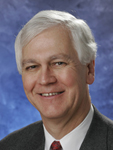Eastern District of Wisconsin Bar Association Presents Awards to Michael O’Hear and Tom Shriner
 Warm congratulations to our colleague, Professor Michael M. O’Hear, who recently received the Judge Robert W. Warren Public Service Award, at a ceremony during the Eastern District of Wisconsin Bar Association’s annual meeting. It was a pleasure for a number of us to attend and see Michael receive well-deserved recognition for his service. As Nathan Fishbach, of Whyte Hirschboeck Dudek, noted in making the presentation, Michael is “a distinguished academician whose mission is to analyze and explain the dynamics of the sentencing process.” Indeed, Michael has become a national leader in the study and discussions concerning sentencing, and he has been active in this community as well.
Warm congratulations to our colleague, Professor Michael M. O’Hear, who recently received the Judge Robert W. Warren Public Service Award, at a ceremony during the Eastern District of Wisconsin Bar Association’s annual meeting. It was a pleasure for a number of us to attend and see Michael receive well-deserved recognition for his service. As Nathan Fishbach, of Whyte Hirschboeck Dudek, noted in making the presentation, Michael is “a distinguished academician whose mission is to analyze and explain the dynamics of the sentencing process.” Indeed, Michael has become a national leader in the study and discussions concerning sentencing, and he has been active in this community as well.
At the same ceremony, the Eastern District presented its Judge Myron L. Gordon Lifetime Achievement Award to Foley & Lardner’s Thomas L. Shriner, Jr., an Indiana University law graduate and well-known Milwaukee litigator (and adjunct professor of law here at Marquette). The citation accompanying the award, written by Bill Mulligan, L’60, and Dean Joseph D. Kearney, concluded with the observation that Tom is “respected and admired for his prodigious knowledge of the law, great wit, smile, and willingness to help others.” Congratulations as well to Tom.
The full citations can be found here concerning Michael and here concerning Tom.

